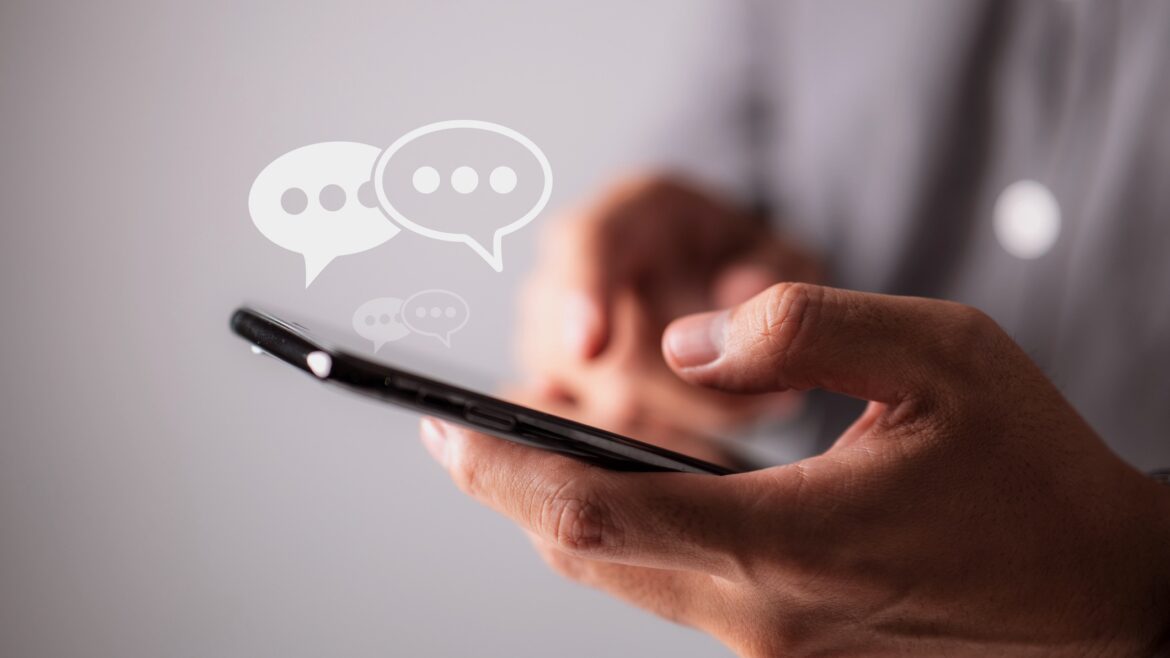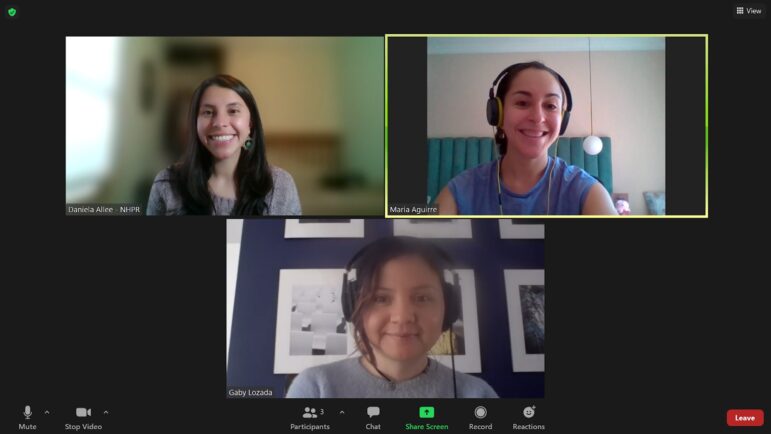Experiments show potential of newsletter platforms beyond email

ipuwadol / iStock
Public media is investing in email newsletters as a product with a relatively low barrier to entry that can reach audiences while providing valuable data on who they are.
But other text-centric platforms and products are available, from messaging apps to LinkedIn newsletters. Stations and nonprofit newsrooms that have expanded in this direction are learning valuable lessons about finding potentially underserved audiences — and about how to improve their email newsletters, too.
“Younger, working adults have drifted from traditional radio content yet crave locally relevant news delivered on their schedules,” says Ernesto Aguilar, executive director of radio programming and content and diversity, equity and inclusion initiatives at KQED in San Francisco and author of a newsletter about Latinos and public media. “Developing new habits here seeds future loyalty that can boost public media.”
Current spoke with three outlets making moves in this space to find out what works, what doesn’t and what teams eager to test alternatives to email need to know.
WLRN and text-message newsletters
A two-person team at WLRN in Miami launched a text message environment “newsletter” that ran from March 2018 to March 2023.

It was conceived as an experiment to meet an appetite for relevant, short-form and timely information “without being invasive” and in a personal tone, says Engagement Editor Katie Cohen. WLRN wanted to test a space where it was not already interacting with audiences and see whether it could run a form of newsletter, she adds.
Environment news was seeing high engagement on social platforms at the time and continues to be one of the station’s most-read beats, says Cohen. WLRN had also appointed its first environment reporter, who contributed to the newsletter and ensured that there would be sufficient journalism to share via text.
“We live in a place that has been ground zero for sea level rise and conversations about climate change,” Cohen says.
The format of the weekly text newsletter was simple: an introduction from a journalist, a summary of four or five relevant stories, and a prompt to get in touch. Editing the story summaries to fit within a limited character count and grab people’s attention was challenging, says Cohen.
WLRN used mobile messaging platform GroundSource to run the newsletter, which took around two hours to produce from start to finish. Cohen recalls the newsletter reaching hundreds of subscribers with open rates of above 90% from the beginning. To grow subscribers, sign-up links were embedded in relevant on-site stories, and the newsletter was mentioned on air.
As the newsroom put more resources into email newsletters, the service was retired. “We were paying for GroundSource and weren’t trying to do enough on that platform to continue,” says Cohen, adding that traditional newsletters do provide more audience data.
Creating a hyperlocal text service provided lessons about product development, says Cohen: “I had a supportive boss who created a space for experimenting within our newsroom. We were at the forefront of something and incorporated lessons learned into other places.”
Cohen surveyed the audience using Google Forms and gathered more audience data. The response was “incredibly positive” and evidence that the product was “having an impact,” she says.
“We were providing a service that people found to improve their lives,” she says. “I aim to build trust with the people we serve, and this is one of the ways that we did.”
WLRN audiences can now subscribe to an environment email newsletter. On reflection and with more resources, Cohen says, it would have been informative to experiment with text on another beat or to have expanded to WhatsApp: “We have a majority-minority population, and that continues to be an area worth pursuing.”
WhatsApp: a Spanish-language opportunity?
Aguilar says Spanish-language “newsletters” on WhatsApp could foster more inclusion than current intermittent translation efforts — a space where New Hampshire Public Radio is experimenting.

Its Spanish-language WhatsApp “newsletter” is part of its Qué Hay de Nuevo, New Hampshire programming. Launched in spring 2020, Qué Hay on WhatsApp was initially a response to the lack of local Spanish-language news about COVID-19. After six to nine months, the team behind it — senior news editor Daniela Allee, producer Maria Aguirre and bilingual reporter Gaby Lozada — wanted to expand its coverage for this burgeoning audience.
“We hadn’t done much to reach Spanish speakers in the state,” says Allee. Going to WhatsApp, where this audience was already present, made more sense than trying to get them to come to NHPR’s website: “That’s a big behavioral leap.”
New subscribers receive a one-off welcome message, followed by a text message and audio file with a Spanish news bulletin three times a week. Friday’s message is a roundup of weekend events in Spanish based on the content of a weekly English-language email newsletter. Each newsletter also mentions the service’s current underwriter, the New Hampshire Charitable Foundation.
Allee sends a version to a test group on WhatsApp before sending the newsletter to three broadcast lists, reaching 564 users. Manually managing these lists and ensuring that the service doesn’t breach WhatsApp’s mass messaging rules is time-consuming, she says: “You don’t control the publishing platform and are learning the platform as it changes.”

NHPR’s website promotes the service, and new subscribers often come after Lozada has been out reporting. The team has also shared flyers and QR codes locally. Continued subscriber growth is a measure of success, says Allee, who also manually tracks questions, comments and reactions to messages in a spreadsheet. Sometimes getting the service out each week with a small team is a success as well, she adds.
The team plans to develop a more articulated audience strategy for the service, including gathering more data on Spanish-language audiences in New Hampshire and analyzing the demographics and behaviors of the Qué Hay WhatsApp audience. A more rounded definition of people within these communities would help the WhatsApp newsletter grow beyond its pandemic beginnings as a broad Spanish news service, says Allee.
“WhatsApp presents inroads to the massively untapped Spanish-speaking diaspora through a culturally preferred channel,” adds Aguilar. But he says newsrooms need to study these audiences’ consumption patterns to cut through the competition for their attention.
Moreover, they need to go beyond individual experiments to take advantage of this opportunity, he says: Newsroom leaders in these communities need to prioritize bilingual programming and set the intention for their journalists.
“Sporadic approaches” could “inadvertently disrespect” audiences they aim to better include, he says: “I would love to see leadership at more stations holding deep strategic discussions about realistic possibilities here with their teams. What short-term incremental improvements can lead to a longer-term content rhythm that might resonate? And if comprehensive translation coverage remains out of reach, how can they still foster a community where they are?”
The Trace and LinkedIn newsletters
For nonprofit newsroom The Trace, which covers gun violence, LinkedIn may not seem an obvious fit, says impact and audience editor Gracie McKenzie: “We’re not writing about business; we write about the business of guns.”
However, diminishing returns from X, formerly known as Twitter, in terms of audience reach and engagement prompted the team to explore new avenues. The Trace uses LinkedIn’s newsletter feature to promote Ask The Trace, where reporters answer reader-submitted questions about gun violence on a more regular basis.
Ask The Trace felt like the right feature to promote via a LinkedIn newsletter, says McKenzie: “It’s a good space to introduce people to what we do. There’s also a lot of misinformation on our beat, so having the opportunity to go deep on a question benefits readers and our staff.”
It published its first edition in August 2023 and has produced 11 editions to date on a biweekly basis. It’s nascent but already has 347 subscribers — more than a third of the number of followers of the newsroom’s LinkedIn page.
LinkedIn’s newsletter composer resembles tools used for email newsletters: text and headings, links, images and videos can all be added. McKenzie drafts the LinkedIn newsletter, including an intro to the question, links to related reading and the answered question on The Trace’s website, and a promotion of other email newsletters from The Trace. It’s then edited by The Trace’s newsletter editor before sending.
LinkedIn newsletters can be scheduled, and a post promoting a new edition will also be sent to your LinkedIn page. The Trace team has iterated the structure, largely as a result of changing resources — the team behind it is now two after the departure of intern Laura Esposito, who helped launch the newsletter. It initially featured more original content and was written in the first person.
“Original content can bring more value to readers,” says McKenzie, who would also like to experiment with taking questions from LinkedIn users to answer in the series.
LinkedIn offers the same analytics data for LinkedIn newsletters as it does for page posts, so McKenzie recommends adding tracking codes to featured links. These help differentiate between referral rates from LinkedIn pages versus newsletters to a website.
But unlike email newsletters, which provide addresses, it’s hard to see who subscribes, says McKenzie, who describes the tool as “more like a push notification” than a traditional newsletter.
“Everyone’s got a take on LinkedIn, and the volume can undermine nuance,” adds Aguilar, who uses both Substack and LinkedIn for his newsletter. “Yet it also attracts reason-minded scrolling professionals who want substance grounded in public media. Trust your distinct value. … Your superpower is the voice you have.”





